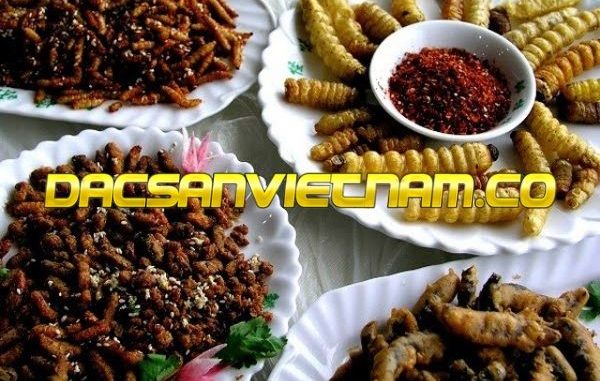Arriving in Tra Vinh, when first hearing about the name of lemongrass chili, many tourists still cannot imagine what this animal will look like and how to eat it.
12.1 Characteristics of Lemongrass chili peppers
According to local people, the loi choi is shaped like a chopstick, only about 20cm long, with a round and white body. Loi choi often live in mudflats, emerging dunes or riverside mudflats.
It is no coincidence that the dish made from loi choi has become a famous Tra Vinh specialty, but because it is not available in every season and it is not easy to catch because the number of loi choi is really small.
Loi choi can be used to make many delicious dishes. But the most delicious and famous dish is still loi choi with lemongrass and chili.
12.2 How to prepare Lemongrass and chili peppers
Normally, after being caught, the fish will be washed until the mud is gone, then salted and dried in the sun or over a fire. Next is the preparation stage of chili and lemongrass. After the ingredients are ready, people put oil in the pan and wait for the pan to be hot, then put the chopsticks into the frying pan.
When encountering hot steam, the fat from the body of the loi choi emits a fragrant aroma. After the stir-fry is complete, people put the loi on a plate, eat it with hot rice and vegetables. Loi choi meat must be eaten hot, eaten immediately to be delicious, to feel the delicious taste. The meager meals of the countryside people are just that, but they have left visitors with many unforgettable impressions.
12.3 Note how to eat Loi choi with lemongrass and chili
Visitors can visit people’s houses, eateries or restaurants in Tra Vinh to enjoy this rustic dish. The dish of lemongrass chili sauce served with a sweet aroma will surely make visitors crave for just trying it right away.
When eating, just keep the whole baby and bring it to your mouth to take a bite, the fatty taste of the fat combined with the aroma of lemongrass and the spicy taste of chili blends in each chewy, sweet meat.
It would be better to enjoy the chewy loi choi meat with a little spicy wine. Enjoying lemongrass chili will make many visitors feel good and want to enjoy this fancy dish every time they come to Tra Vinh.
Source: Collected internet.
Eight UNESCO world heritage sites stretch across Vietnam. Each place offers interesting perspectives on local life and majestic natural beauty. The Imperial Citadel and Hue mausoleums take you back to the Nguyen Dynasty full of ups and downs. Hoi An ancient town was once a bustling meeting point for ships and traders around the world. Throughout other provinces and cities, you will encounter ancient relics, poetic scenes, and vivid pieces that create the picture of Vietnamese heritage.
The cultural identity of ethnic groups is clearly expressed in community life and in economic activities from customs, costumes to culinary styles. Below are the unique features of Vietnamese culture that you can learn about.
According to the ups and downs of the nation's history, Vietnamese customs and practices are constantly being innovated according to social trends. One of the oldest and most influential customs in history is the custom of chewing betel. This is a custom that dates back to the Hung King period and originates from the legend of Trau Areca and this custom has become a typical image of the brotherhood and love between husband and wife of Vietnamese people. Not only the custom of chewing betel, Vietnam also has another custom that was born in ancient times, which is the custom of welcoming the new year, also known as Tet - traditional Tet.
Nha Rong Wharf and Ho Chi Minh Museum, Ho Chi Minh City Branch, at 1 Nguyen Tat Thanh Street, District 4, Ho Chi Minh City. This place not only displays artifacts associated with his life and career, but also especially marks the event that on June 5, 1911, President Ho Chi Minh left Vietnam from Nha Rong Harbor to begin his journey. traveling around the world to find a way to save the country and liberate the nation from the yoke of French colonialism...
